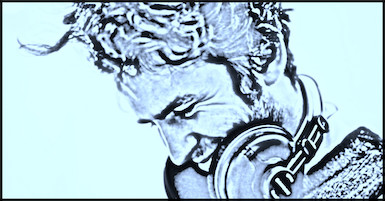What is a rough demo?
A rough song demo can be as simple as a guitar/vocal or piano/vocal recording made on an iPhone. Or it can be as elaborate as a concept for a complete track with drums, bass, vocal, keyboard, and guitar recorded on multiple tracks. Whether it’s simple or elaborate, to be truly effective it has to convey the essential energy and feel as well as the complete melody, lyric, and chord progression of the song. (See “U.S. Copyright Office” below for demos without chords.)
Four reasons you need a rough demo
> 1. To test your song ideas.
One of the most important uses for a rough demo is to record your structure, melody, and lyric ideas so you can hear them as a listener would. When you’re involved in the effort of writing, singing, and playing your song, it’s impossible to step out of your songwriter role. Recording a rough demo allows you to walk away then come back later to listen with fresh ears, as an audience member would hear the song.
Note your reaction as you listen. Where does the song lose energy or focus for you? Did the melody become too complicated to follow? Did the double chorus at the end feel too long? Go back and change those things record your new ideas, then walk away and come back to listen again after an hour or so. Keep going through this process until you can listen to the demo and feel that the song is working for listeners.
> 2. As a reference for yourself.
When producing a song in your home studio, use the rough demo to keep in touch with your original inspiration. At some point in the process, you’re bound to reach a place where nothing seems to work, you’re sick of the song, and you’re thinking about speeding up the tempo because you’re soooooooo bored. That’s the time to go back and listen to the rough demo.
It’s not unusual for the original feeling you loved so much to slip away during the writing and production process. Your rough demo can be a lifesaver. In fact, there have been instances when the rough demo ended up on someone’s album because they were never able to reproduce that feel!
> 3. As the basis for a final recording.
You can continue to build on and refine your rough demo to create a final master recording. If you used a simple, repeated rhythm loop for the rough demo, consider variations, fills, adding and subtracting extra percussion and drum sounds to the loop. Replace a keyboard part with a better performance or a richer sound. Replace a synthesizer bass with a real bass player. Keep what you like, change or improve what you don’t.
> 4. For the U.S. Copyright Office.
The copyright office defines a song as “words and music.” They don’t care about chords. They will accept a voice-only recording without any accompaniment at all. It’s the most basic rough demo of all!
Making a rough song demo
Convey the rhythmic feel – Many songwriters like to start a song with a rhythm groove to set the overall energy and feel of the song. You can choose a drum or percussion loop or strum a guitar or use a piano to play a rhythm part. If you’re not using a loop, you could record with a basic click or metronome track.
Include all the sections of your song – The rough demo should be a complete representation, including all verses, choruses, a bridge (if there is one), intro and ending. If you think you want a double chorus at the end, put it on your demo. If you want a short intro, put that on your demo.
Play the chord progression – Play chords exactly where you want them; change where you want them to change and be consistent. If you play a chord early in one verse, then play it early in the next. Don’t be sloppy about this. You may end up using your rough demo as a foundation for building your final tracks. If you bring in a hot bass player (or play bass yourself), you’ll be using those chord changes as a guide.
Sing the melody and lyrics – If you’ll be the singer on the final track, don’t worry too much about a perfect performance now; go for spontaneity and feel. Get your initial, fresh interpretation of the song on tape so you can refer to it later. If you’ll be using a vocalist later, you’ll want to be sure the melody is clear and just the way you want it. If you have trouble singing on pitch, try doubling your voice with an instrument.
Related posts:
